Should You Buy a Turkish Kilim Rug? Exploring the Benefits and Considerations
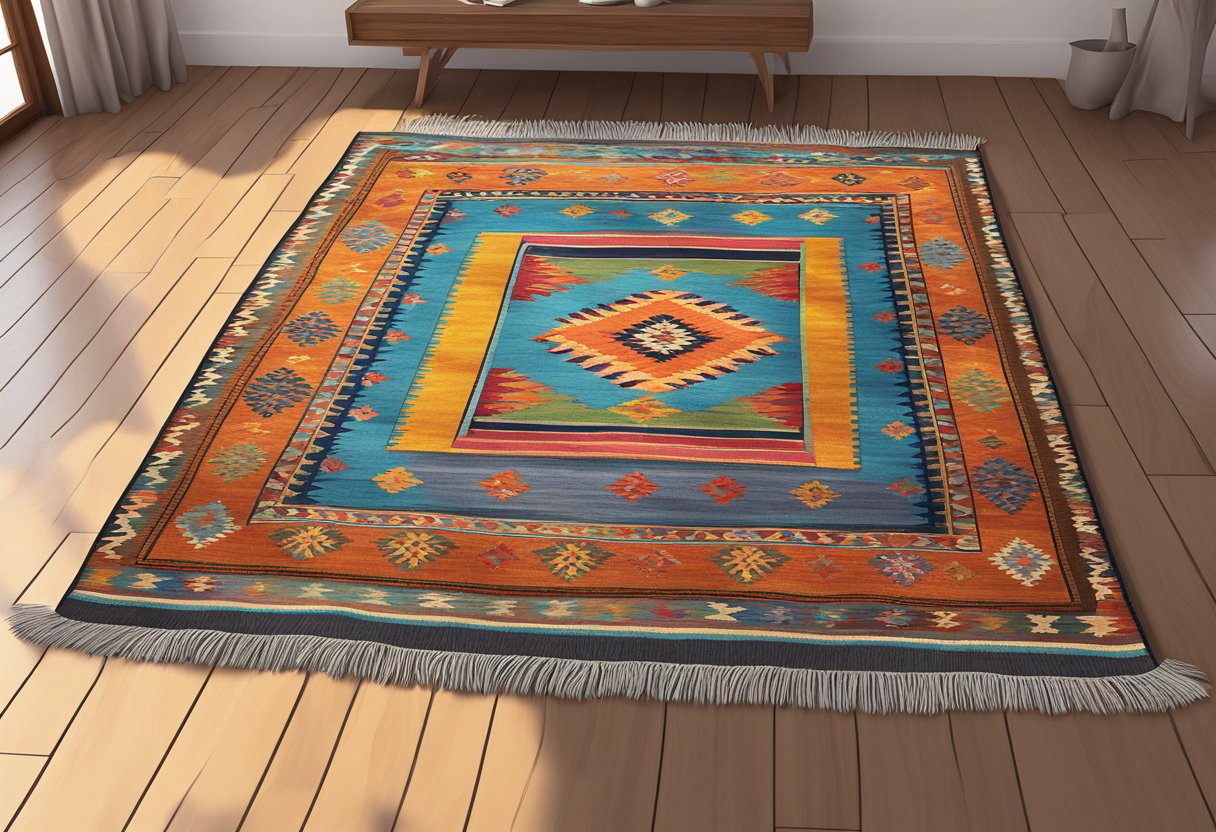
When considering whether to buy a Turkish Kilim rug, it's essential to understand the rich cultural heritage and unique craftsmanship these rugs offer. Turkish Kilim rugs are flat-woven, featuring intricate patterns and vibrant colors that make them highly desirable for homes worldwide. Each Kilim rug showcases traditional motifs and stories passed down through generations, making them more than just floor coverings—they are pieces of art.
For anyone looking to add character and sophistication to their living space, a Turkish Kilim rug is a great choice. These rugs are not only visually striking but also durable and versatile, fitting beautifully in various settings, from modern to vintage decor. Proper care and placement can ensure that a Kilim rug remains a beloved part of your home for many years.
It's important to be mindful of authenticity when purchasing a Turkish Kilim rug. Handmade rugs will have consistent patterns on the front and back, while machine-made ones will not. This simple check can help you avoid potential pitfalls and ensure you invest in a genuine piece, rich with history and culture.
Historical and Cultural Background
Turkish kilim rugs have a rich historical and cultural background that spans centuries and regions. They carry traditional weaving techniques, distinct motifs, and symbolize various cultural contexts.
The Anatolian Origins
Kilim rugs evolved from the Anatolian region in Turkey. These pileless, flat-woven textiles reflect the artistry of local weavers. The weaving technique and styles can be traced back to ancient Anatolian tribes. The Anatolian roots of kilim rugs are significant in showcasing the traditions passed down through generations. They have been used for everything from floor coverings to wall hangings.
Turkish Rug Motifs and Symbolism
Turkish kilim rugs are renowned for their distinctive motifs and patterns. A common motif is the "ram's horn," symbolizing power and protection. Another frequently seen design is the "eye," believed to ward off evil. These symbols carry deep cultural meanings and reflect the beliefs of the communities that weave them.
Rug Weaving Across Centuries
The long history of Turkish rug weaving dates back to ancient times. Historical evidence like the Pazırık rug, an ancient pile rug discovered in Siberia, suggests that rug weaving dates back to the 5th century BCE. Turkish rugs were particularly influenced by the Ottoman Empire’s artistic developments. This long history demonstrates the resilience and continuity of rug weaving traditions.
Defining Characteristics of Turkish Kilim Rugs
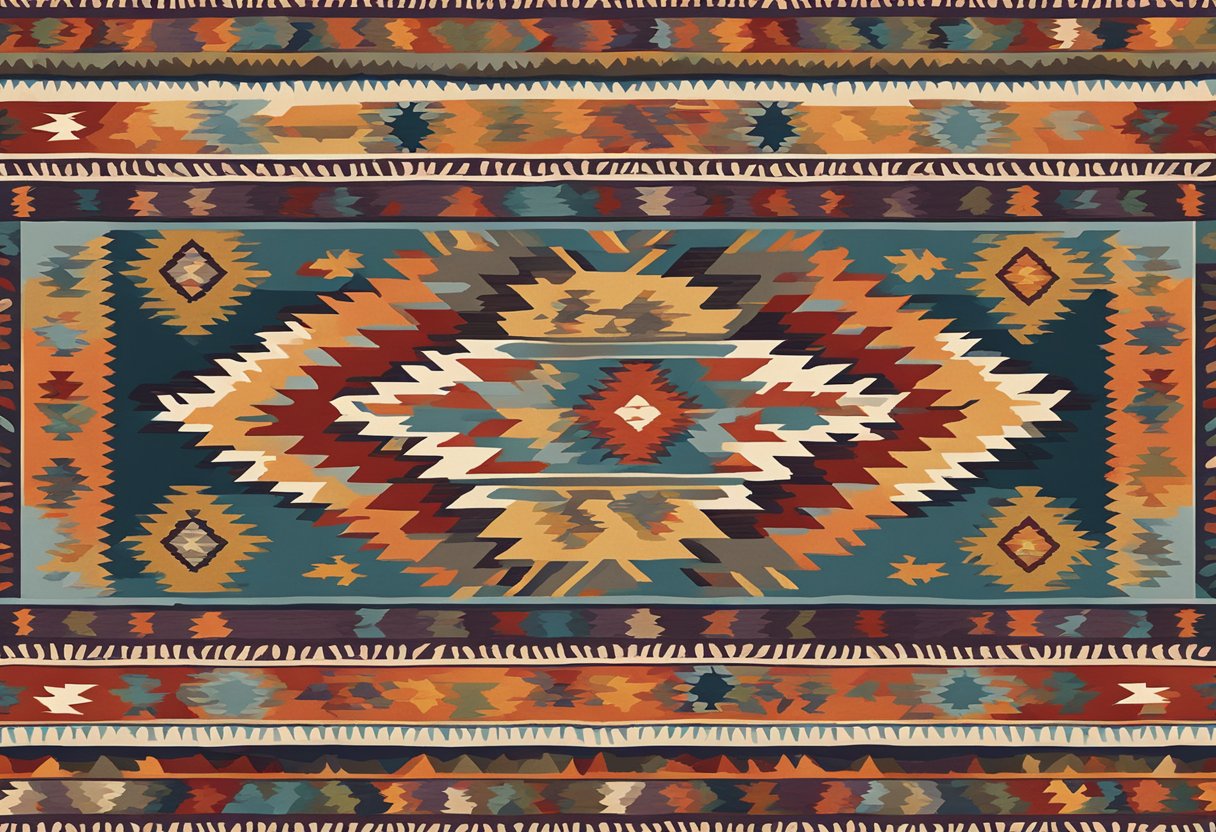
Turkish Kilim rugs showcase distinctive weaving techniques, vibrant patterns, and unique motifs. They stand out for their flatweave construction, intricate symbols, and use of natural dyes and bold colors.
Weaving Technique and Loom
Kilim rugs are handmade on a loom, using a flatweave technique. This method involves interweaving warp and weft strands, resulting in a thin, flat textile. Unlike pile rugs, Kilims are not knotted. The intricate process requires skill and precision, often taking months to complete each piece. The traditional use of a double knot, also known as the Turkish or Ghiordes knot, ensures durability and strength. The loom's structure and the weaver's craftsmanship define the rug's quality and design.
Flatweave Versus Pile Rugs
Kilim rugs differ significantly from pile rugs. Flatweave Kilims are created without the use of knots, resulting in a smooth, flat surface. This makes them lightweight and easy to fold. In contrast, pile rugs have a heavier, thicker texture due to the added knots forming the pile. Flatweave construction allows for bold, geometric patterns to be clearly visible on both sides. This reversible nature is a key advantage of Kilim rugs, adding to their versatility and charm.
Unique Motifs and Colors
The motifs and colors in Kilim rugs carry cultural significance. Common symbols like the ram's horn represent strength and protection, while the eye motif is thought to ward off evil. These rugs often feature geometric patterns and traditional designs passed down through generations. Natural dyes, derived from plants and minerals, produce vibrant colors such as reds, blues, and greens. The use of these natural dyes means each rug has unique color variations, adding to its artistic and cultural value.
Varieties and Regional Differences
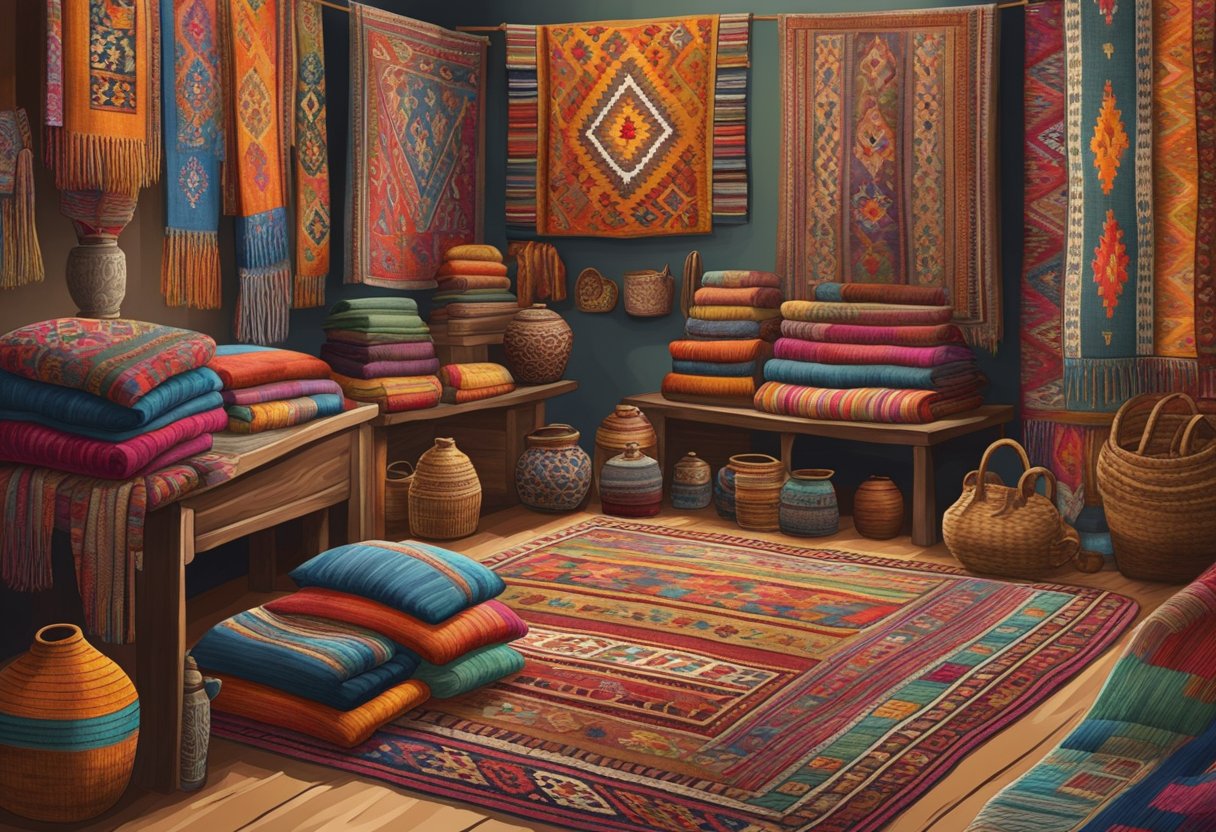
Turkish Kilim rugs come in various styles rooted in different regions, each with unique characteristics. Modern interpretations also bring fresh designs while staying true to traditional methods.
Anatolian Rugs and Their Regions
Anatolian rugs originate from central, western, and eastern Turkey. Istanbul is known for its high-quality, luxurious Hereke rugs. These often feature intricate floral and medallion designs in silk and wool. The Konya region produces simpler yet bold designs, often using geometric patterns.
In western Turkey, Bergama rugs are celebrated for their coarse wool and vibrant colors. Kayseri offers rugs made with finer wool or silk, characterized by floral motifs and a lighter color palette. Oushak rugs from western Turkey are distinguished by their large, floral patterns and soft color schemes, making them a favorite in modern home decor.
Modern Interpretations of Kilim Rugs
Modern Kilim rugs maintain traditional weaves while incorporating updated designs. One popular trend is patchwork Kilims, which combine various vintage sections into a single rug. These are often dyed in contemporary colors to suit modern tastes.
Designers today experiment with bolder colors and abstract patterns that differ from the traditional geometric and floral designs. Yet, they still use authentic techniques and materials like wool, cotton, and silk. Some modern Kilims even blend Western influences with traditional Turkish artistry, reflecting a fusion of old and new styles. This variety allows for a rich collection that can fit diverse aesthetic preferences.
Materials and Craftsmanship
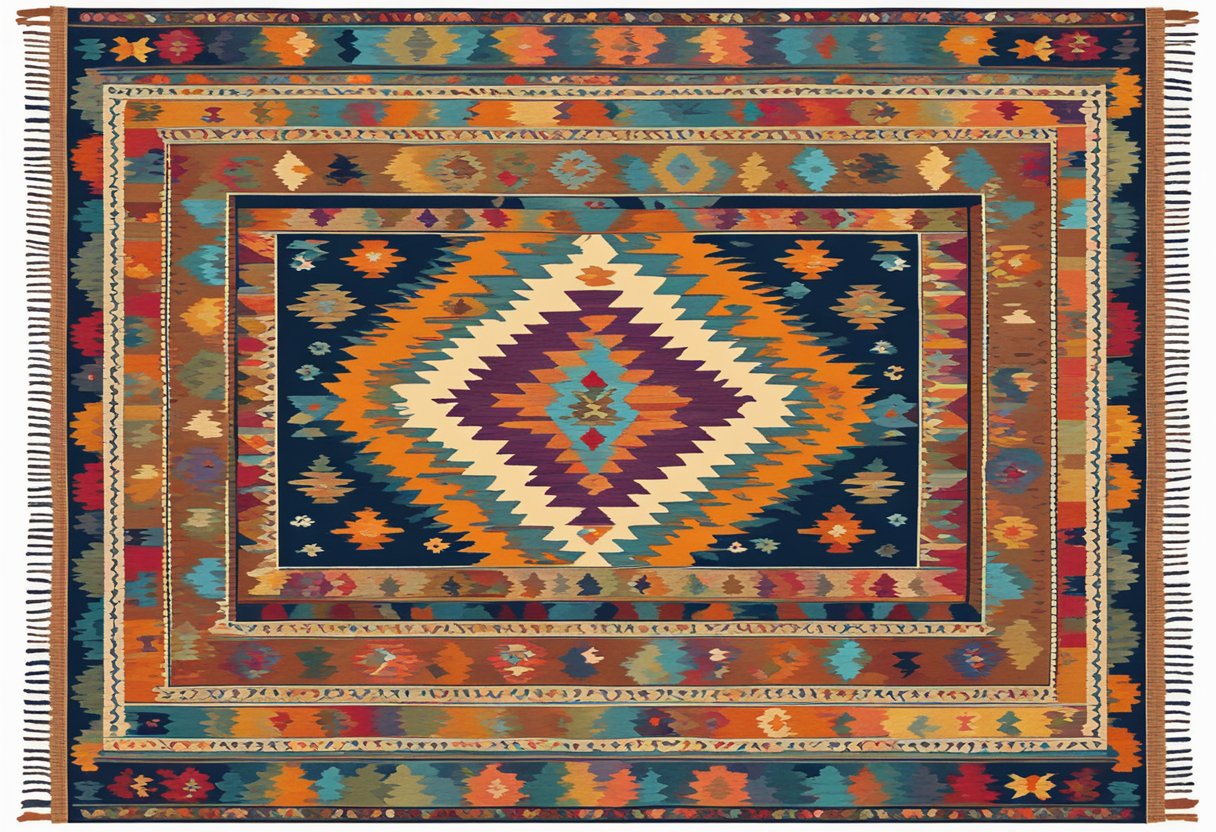
When considering a Turkish Kilim rug, the choice of materials and the craftsmanship involved are crucial. These rugs are typically made from wool, silk, and cotton, each contributing unique qualities. Understanding the importance of natural materials helps in appreciating the quality and authenticity of these rugs.
Wool, Silk, and Cotton
Wool: Wool is the most common material used in Turkish Kilim rugs. It is valued for its durability and softness. Wool fibers can hold vibrant dyes, making the colors of the rug more vivid and long-lasting.
Silk: Silk is another premium material found in some hand-knotted rugs. It offers a luxurious sheen and softness that wool cannot match. Silk is less common than wool and is often used for intricate detailing.
Cotton: Cotton is usually used for the foundation and warp threads. It provides a sturdy base that supports the overall structure of the rug. Cotton is also more affordable than wool and silk, making it a practical choice for many weavers.
The Significance of Natural Materials
Natural materials like wool, silk, and cotton are preferred because they are more authentic and offer better quality. They are also eco-friendly and biodegradable, making them a sustainable choice. Moreover, natural dyes derived from plants and minerals are often used, ensuring that the colors are both vibrant and non-toxic.
Using natural materials results in a softer and more comfortable texture. They also enhance the longevity of the rug, as these materials are known for their resilience. Natural fibers tend to wear better over time, adding to the rug's value and appeal.
In summary, the materials and craftsmanship involved in a Turkish Kilim rug are fundamental to its quality and beauty.
Assessing Quality and Craftsmanship
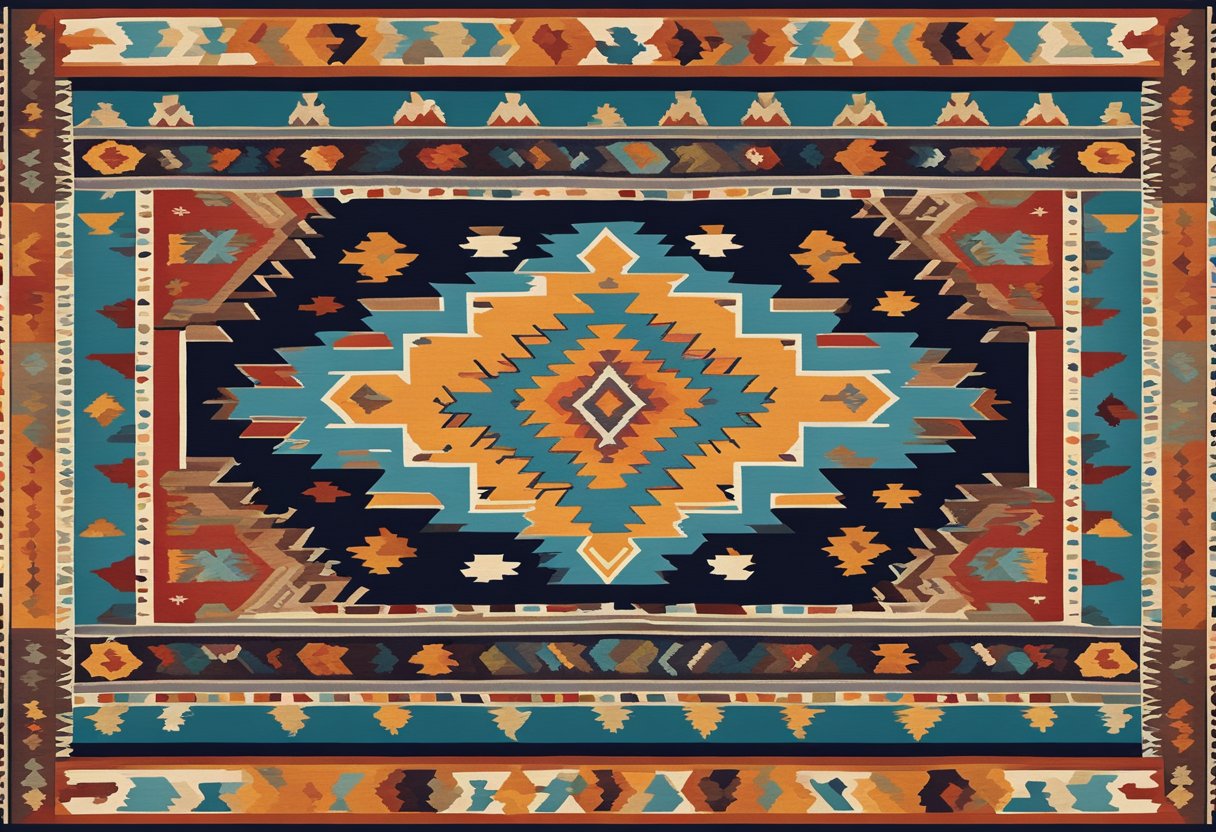
Evaluating the quality and craftsmanship of a Turkish Kilim rug involves understanding specific aspects like knotting techniques, knot density, and the attention to detail in its creation.
Hand-Knotting and Gördes Knot
Hand-knotting is a key factor in the craftsmanship of Turkish Kilim rugs. Each rug is created by skilled artisans using traditional techniques passed down through generations. The Gördes knot, also known as the Turkish knot, is a distinguishing feature. It involves looping the yarn around two warp threads, making the rug more durable. This knotting method provides added strength and longevity.
Artisans meticulously hand-knot the yarn, ensuring consistency and precision. The quality of the knotting impacts the rug's durability and lifespan, making it an essential criterion for assessing a rug's craftsmanship. This traditional technique often results in unique and intricate patterns, adding to the rug's value and appeal.
Knot Density and Durability
Knot density, measured in knots per square inch (KPSI), is a crucial indicator of a Turkish Kilim rug's quality. Higher knot density means more knots are packed into each square inch, which increases the rug's durability and intricacy. Typically, higher KPSI rugs are softer and more detailed but require more time to produce, reflecting higher craftsmanship.
Durability is greatly influenced by knot density. Rugs with higher KPSI are generally more robust and resilient against wear and tear. This ensures that the rug can withstand daily use while maintaining its beauty, making it a worthwhile investment for buyers seeking long-lasting home decor.
Attention to Detail in Turkish Rugs
Attention to detail sets apart high-quality Turkish Kilim rugs from lesser ones. Artisans take great care in selecting materials, such as high-grade wool, silk, and cotton. The choice of material can significantly affect the rug's texture, color vibrancy, and overall longevity. Wool and silk are particularly prized for their durability and ability to hold vibrant dyes.
Each step, from dyeing the yarn to weaving the final product, involves precision and care. Patterns are carefully executed, ensuring symmetry and aesthetic appeal. This level of detail not only enhances the rug's beauty but also contributes to its value, making a detailed inspection critical when assessing a Turkish Kilim rug's quality and craftsmanship.
Practical Considerations
When considering a Turkish Kilim rug, it's important to think about the dimensions, how easy it is to clean, and how it will fit into your space. These factors can significantly influence your decision.
Size and Dimensions
Choosing the right size and dimensions for a Turkish Kilim rug starts with measuring the area where you plan to place it. Turkish Kilim rugs come in various sizes, making them suitable for different rooms such as the living room, bedroom, hallway, or kitchen.
Consider whether the rug will be a statement piece or a subtle addition. For a large living room, a more extensive Kilim rug can serve as the centerpiece. In contrast, a smaller rug might fit perfectly beside a bed or in a hallway. Taking accurate measurements helps avoid purchasing a rug that is either too large or too small for your space.
Maintenance and Cleaning
Turkish Kilim rugs are known for their durability and can be easy to maintain if proper care is taken. Regular vacuuming is essential to remove dust and debris. Spot cleaning should be done immediately to prevent stains from setting in.
For deeper cleaning, consider professional rug cleaning services. Avoid using harsh chemicals that can damage the natural fibers. When selecting a Turkish Kilim rug, check for care instructions from the manufacturer or seller. Proper maintenance ensures the rug remains vibrant and lasts for many years.
Finding the Right Fit for Your Space
Finding the right Turkish Kilim rug involves considering where it will be placed and how it will complement your existing decor. Versatile and stylish, these rugs can enhance any room's aesthetic.
In a living room, a Kilim rug can add warmth and character. In the kitchen, a smaller rug can provide a cozy touch. For the bedroom, a Kilim rug can be an inviting addition beside the bed.
Color and pattern also play key roles. Choose colors and designs that complement your furniture and wall color. Matching the rug’s style with your decor helps create a cohesive look.
Styling With Turkish Kilim Rugs
Turkish Kilim rugs offer incredible versatility and elegance, shining in both classic and contemporary decor. These flat-woven rugs create warmth and comfort and work seamlessly with various design styles.
Enhancing Home Design
Turkish Kilim rugs can transform any space with their unique motifs and vibrant colors. In the living room, a Kilim rug can become the focal point by placing it under a coffee table or across hardwood floors, adding both warmth and visual interest.
In bedrooms, Kilim rugs can be placed at the foot of the bed or used as decorative wall hangings. The flat-woven texture provides comfort without bulk, making it ideal for both minimalist and bohemian styles.
Motifs such as the "ram’s horn" bring an element of cultural richness, while geometric patterns add a modern touch. These decorative items are versatile and can be used in places like entryways or dining rooms to create a cohesive and elegant look.
Kilim in Contemporary Decor
Integrating Kilim rugs into contemporary decor enhances the space with a touch of tradition and modernity. In minimalist homes, a Kilim rug can provide a splash of color and texture without overwhelming the clean lines and neutral palette.
Bohemian themes can be enhanced with Kilim rugs draped over furniture, such as sofas and benches, adding coziness and a casual, yet chic, feel. Using Kilim textiles on cushions or as throws can create a layered, eclectic look.
These rugs can be placed in varied spaces like reading nooks or offices to add warmth and personality. Their flat-woven nature ensures they are low-maintenance, durable, and stylish, making them an excellent addition to any modern home.
From Purchase to Home Integration
Buying a Turkish Kilim rug involves understanding the intricate designs and craftsmanship. Once purchased, integrating it into your home enhances both aesthetics and cultural depth.
The Buying Process
When buying a Turkish Kilim rug, start by choosing between machine-made and handmade options. Handmade rugs often feature Turkish or Gördes Knot, while machine-made rugs may have a similar look but lack authenticity.
Checking the rug’s origin ensures you get a genuine piece from Turkey. Inspect the underside—handmade rugs will show the same pattern on both sides. This step helps confirm authenticity and craftsmanship.
Lastly, look for retailers with good reviews. Buying from a trusted source increases the likelihood of investing in a quality product.
Price Considerations
Price varies depending on age, fabric quality, and intricacy of the design. Handmade rugs generally cost more due to the labor-intensive process. However, machine-made rugs offer an affordable alternative.
Consider your budget and how much you are willing to spend. Authentic Turkish Kilim rugs are an investment; they can range from a few hundred to several thousand dollars. Watch for sales or discounts that can make these rugs more affordable.
Ready to Welcome a Kilim Rug
Once purchased, the next step is integrating the rug into your home. Turkish Kilim rugs are versatile and can fit in various settings—from living rooms to offices. Their intricate designs add character and warmth.
To protect your rug, consider placing a rug pad underneath. This helps keep it in place and extends its lifespan. Regular cleaning and maintenance will keep the rug looking its best for years to come.
By following these steps, your new Turkish Kilim rug will become a cherished addition to your home, combining beauty and cultural heritage.




